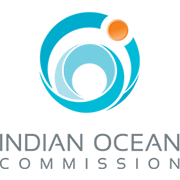The drug treatment surveillance system's objective is to gather data in a standardized way on persons receiving care from drug treatment service providers in participating member states during each calendar year. More specifically, the system allows countries to build a profile of the demographic characteristics, drug-using behaviors, and treatment history of clients, establish trends, and identify risk factors for substance use disorders. Clients’ information remains completely anonymous.
Drug treatment is defined as “the process that begins when psychoactive substance users come into contact with a health provider or other community service and may continue through a succession of specific interventions until the highest attainable level of health and well-being is reached. Treatment data provide a great deal of relevant information on the actual situation and trends within the group of persons with substance use disorders and is one of the best-developed indicators because it can fit readily into the routine intake process at the beginning of a treatment episode. CICAD has a well-established standard data collection instrument for this purpose, and it has been widely applied in the Caribbean region.
- Created a standard data collection instrument available in English and Spanish available for deployment on SurveyMonkey. The instrument collects data on demographic characteristics, drug use and treatment history, mental health, contact with the criminal justice system, and contagious disease history.
- The system has previously been deployed in 11 Caribbean countries, been subject to continuous improvement, and proven to be useful for tracking treatment admissions across multiple countries.
- The data was used in a publication entitled “Characteristics of Persons Seeking Drug Treatment in the Caribbean,” the first publication of its kind in this sub-region.
1. Identification of drug treatment service providers.
2. Regional and national training events for national drug observatories and treatment service providers on the overview of the treatment data system, use of the instrument, and data entry.
3. Conducting a pilot of the system in participating countries for a three-month period.
4. Evaluation of the pilot and dissemination of updated guidance.
5. Full implementation of on-going data collection.
1. Implement the treatment surveillance system in Latin America and the Caribbean.
2. Improved information and awareness of drug use problems from the perspective of the population of persons receiving services from drug treatment facilities.
3. Improved regional trend analysis and reporting in drug use, mainly related to synthetic drugs, new psychoactive substances, and other emerging drugs.
4. Better quality evidence to inform regional drug policies and interventions.
1. Improved availability and quality of information on drug use problems from the perspective of the population of persons receiving services from drug treatment facilities.
2. Improved trend analysis on substance use among those most affected by it.
3. Improved trend analysis related to synthetic drugs, new psychoactive substances, and other emerging drugs.
4. Better quality evidence to inform national drug policies and interventions.
Marya Hynes, Chief, Inter-American Observatory on Drugs, OID_CICAD [at] oas [dot] org (OID_CICAD[at]oas[dot]org) and MHynes [at] oas [dot] org (MHynes[at]oas[dot]org)




